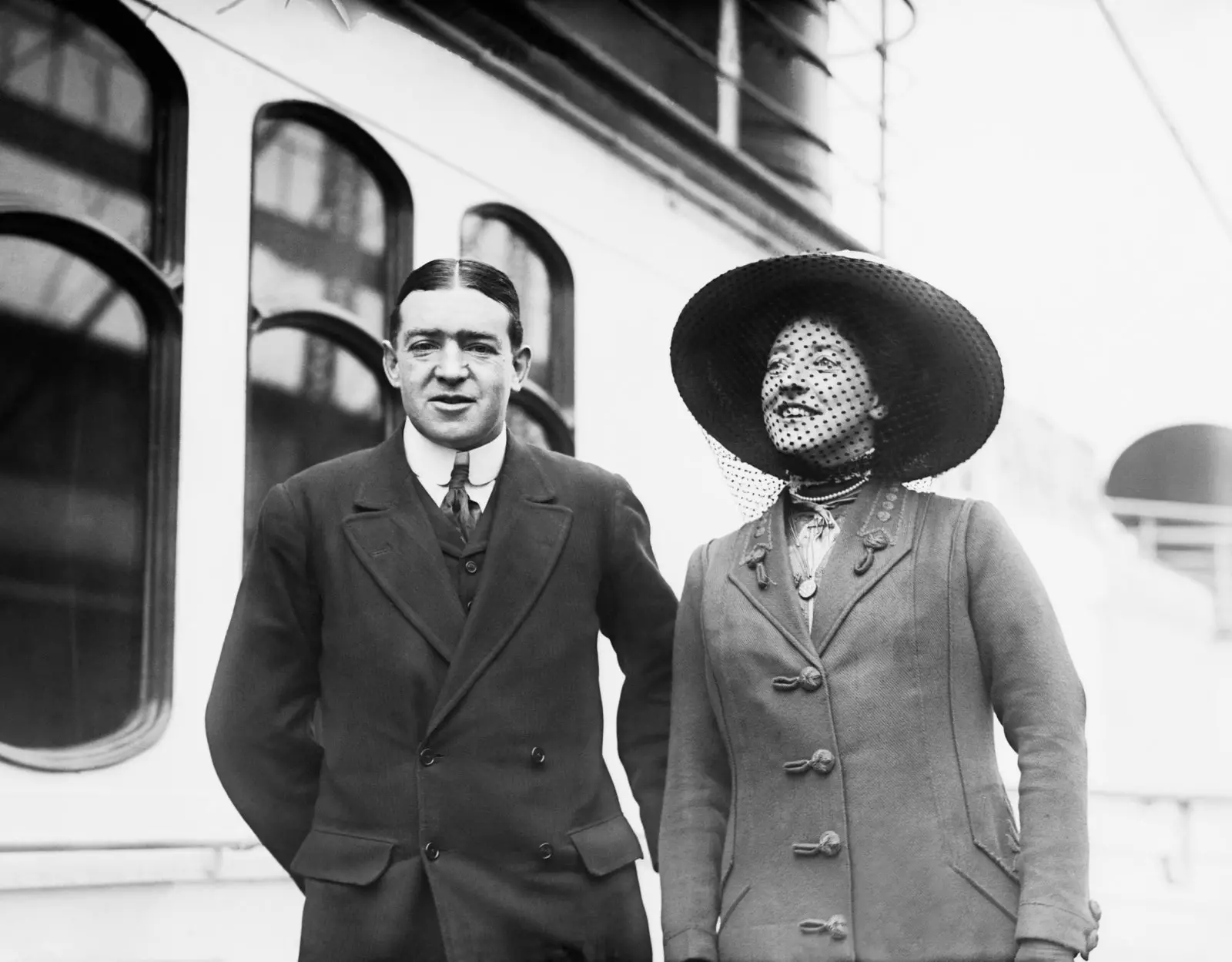
Sir Ernest Shackleton and his wife, in 1909
“January 18, 1912 captain Scott Accompanied by Evans, Wilson, Bowers and Oates , reach the South Pole, but he fails in the feat of being the first”. Mecano's followers already know how this story ends, because the band from Madrid dedicated a song to Captain Scott and to the four men who accompanied him in that tragic and failed attempt to return to camp alive, after reaching the South Pole, but without achieving the set objective: be the first to do so.
The December 14, 1911, just thirty-five days before, the expedition led by the Norwegian Roald Amundsen , had nailed his national flag to the goal.
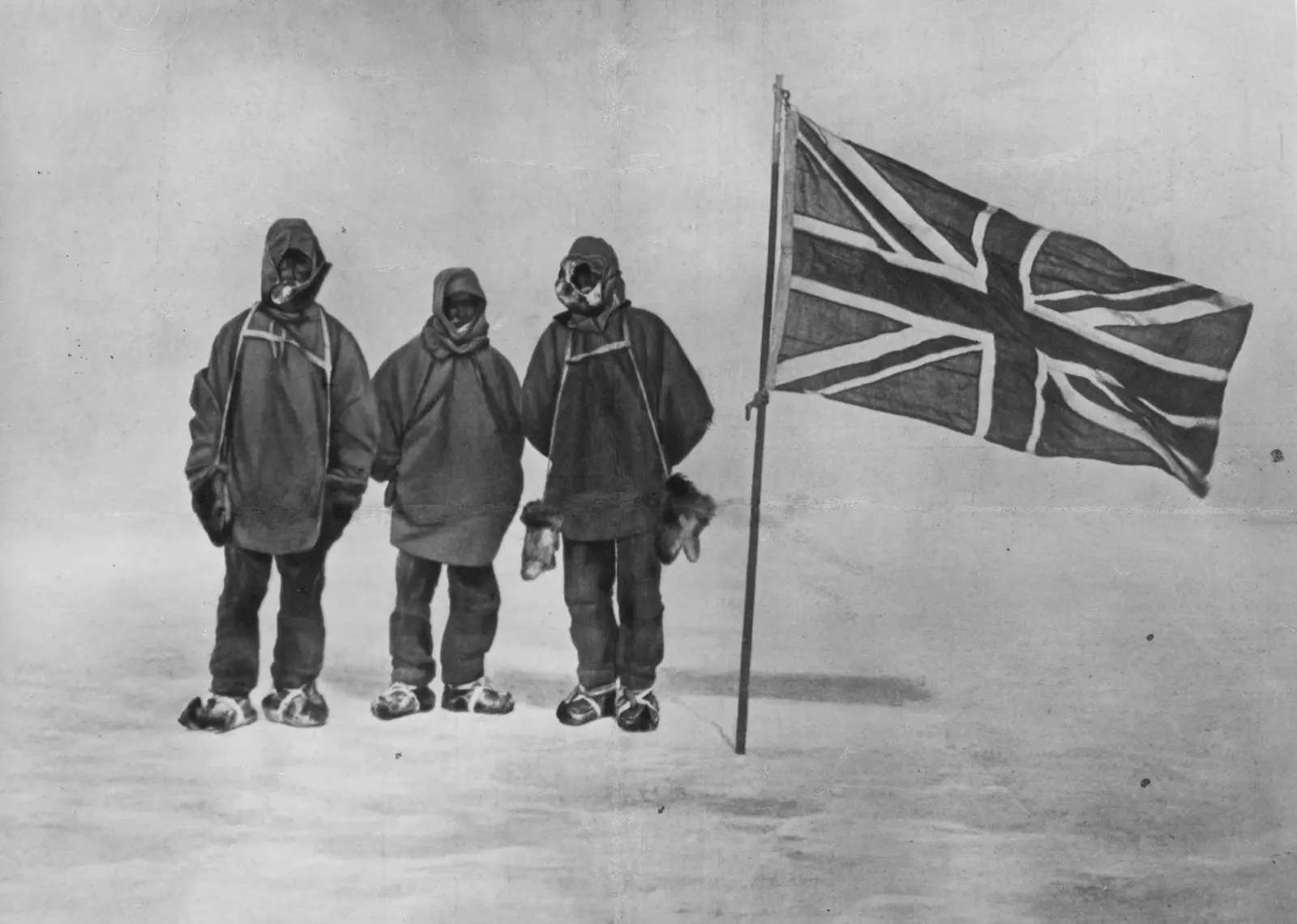
Sir Ernest Shackleton and two members of his expedition team
Possibly, the photograph that the English took there , knowing the seconds to arrive, be it one of the saddest in the history of scientific expeditions. Nothing compared to what happened to them later on that unknown and incommunicado surface, which, by force, was fatal.
Perhaps, because the unfortunate always attracts more attention in this type of narration, Scott's and his men is , definitely, the best known of all explorations that, between the end of the 19th century and the beginning of the twenties of the following century, had the Antarctic Continent as a stage.
However, about those desolate polar landscapes, One of the greatest races ever took place. expedition history, comparable to the one that, some time later, would develop in space.
In a time when navigation was done with sextants and compasses , the history of the conquest of the polar regions is full of stories about great deeds perpetrated by groups of men who, determined to enter the most inhospitable lands on the planet, faced the most extreme adversities. Arriving, in some cases, to lose his life in the attempt, for honor and recognition.
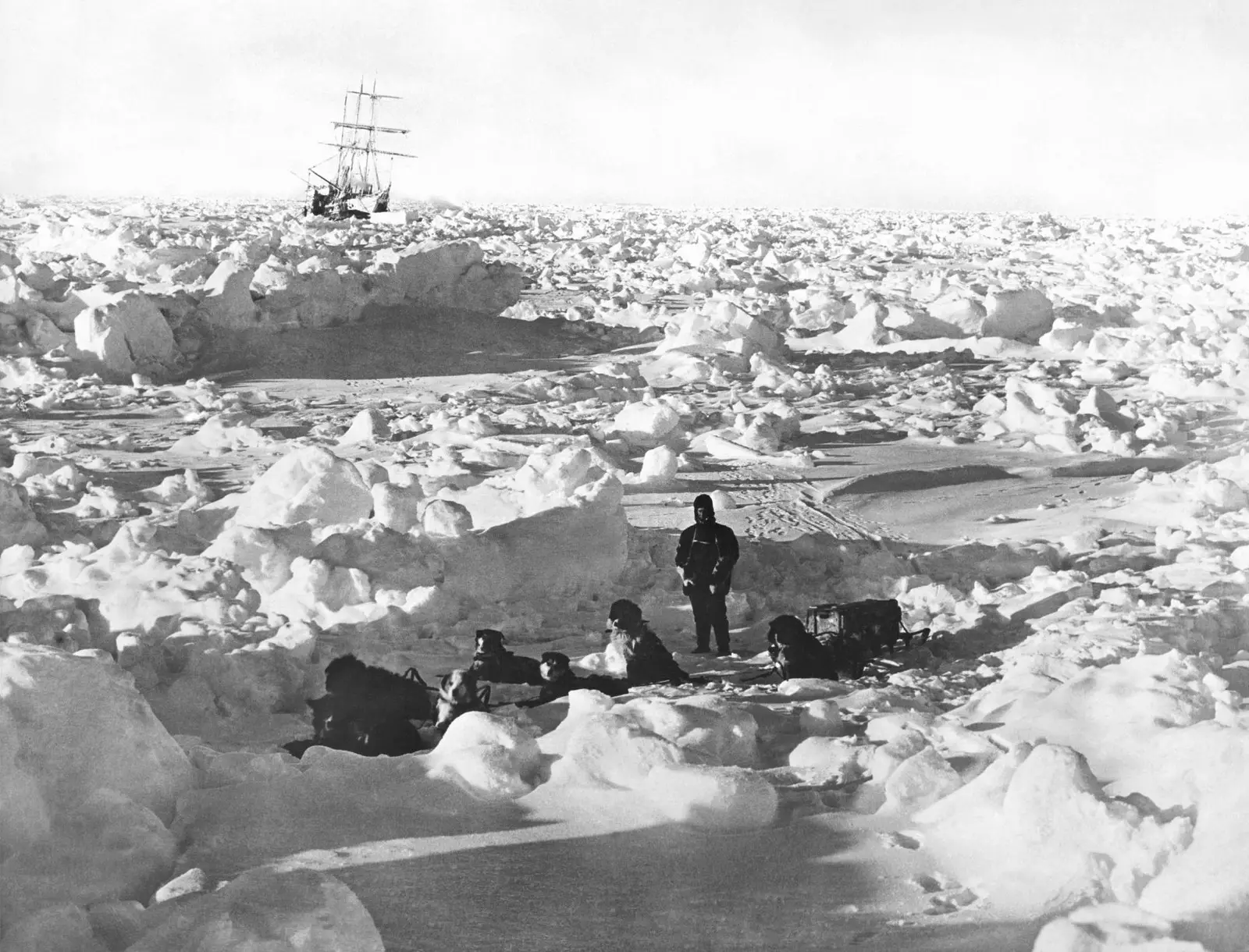
The Endurance trapped in the ice of the Weddell Sea
Amundsen reached the South Pole in 1911, Scott arrived in 1912 and died ; After this, crossing Antarctica became the last great challenge in the last great corner of the Earth. A company in which I would put special effort Irish explorer Sir Ernest Shackleton.
"ENDURANCE" MEANS "RESISTANCE"
“Men are needed for a dangerous journey. Low wages, extreme cold, months of complete darkness, constant danger, return unharmed doubtful. Honors and recognition in case of success”.
They say that this ad appeared in the London press in 1914. Your advertiser was Shackleton and, despite the hardness of the work that was offered, they responded to it around five thousand people: every kind of adventurers, sailors, scientists, doctors, explorers and even women -although the text made it clear that only men were required-.
In the end, just 27 of the applicants were the ones selected to form the crew that would accompany him on his third and most remembered assault on the southern lands.
Previously, the prestigious explorer had been third deck officer of Robert Scott on the Discovery Expedition and he made a second attempt by reach the South Pole with the Nimrod Expedition , being this the first of the three that he captained and, although he did not manage to reach it, they reached the southernmost point ever stepped on by man in Antarctica, just a few kilometers from the long-awaited pole.
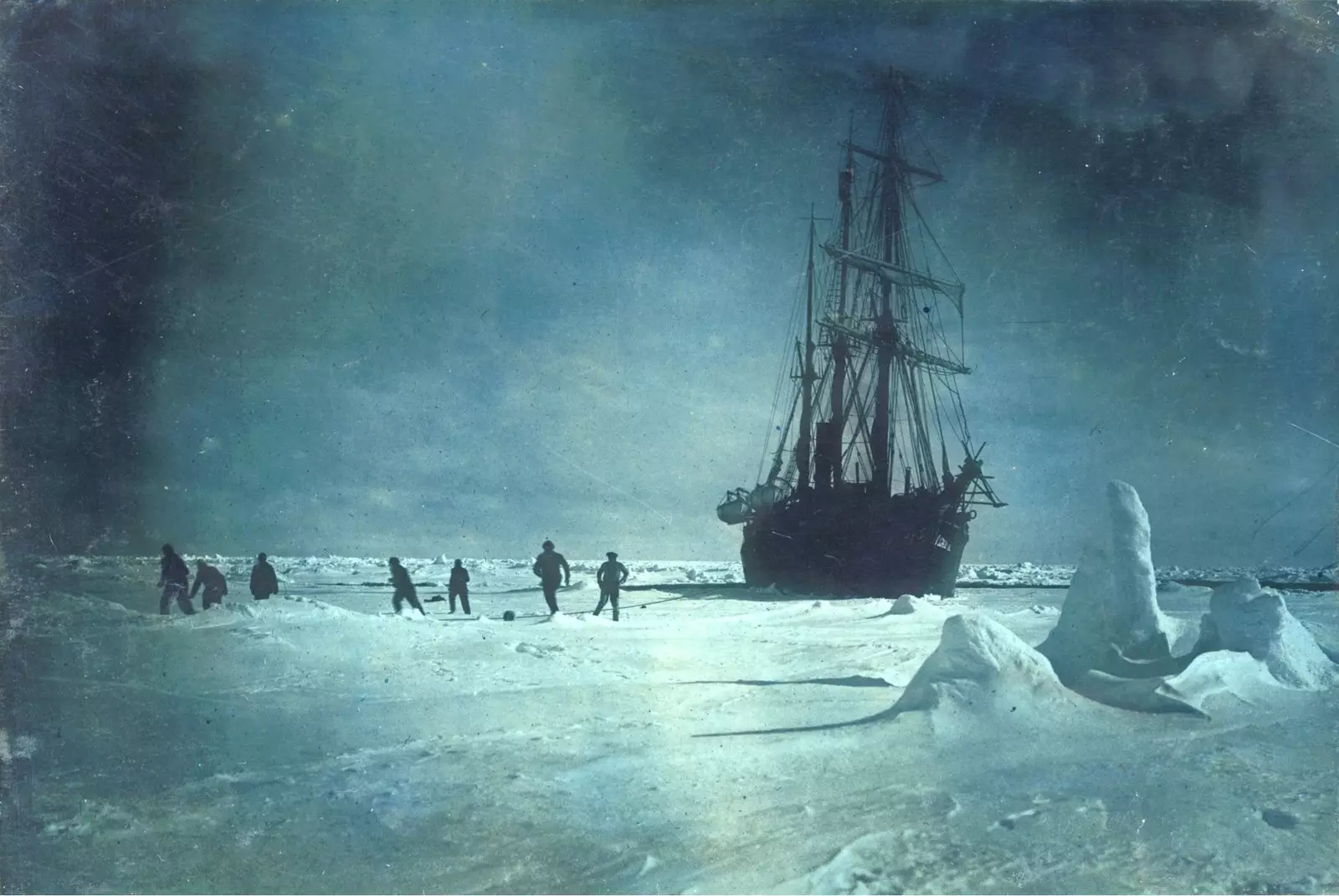
'Endurance' means 'resistance'
However, an intense attraction to those frozen places, the desire for the unknown and the desire to go down in history , led Ernest Shackleton to seek another opportunity for his name will remain engraved in universal memory of Antarctic explorations. And boy did he get it.
Although his immortality would not come from crossing the continent, since this time he didn't even get to set foot on it, but for his heroic deed.
After months of effort, with the help of the British government and various influential personalities and institutions, his ambitious and risky project took shape. Initially, the plan was the following: sailing from Plymouth to Buenos Aires, thence to South Georgia, later they would cross the Weddell Sea and cross Antarctica on foot all the way to the Ross Sea, on the other side of the continent , where another support ship would be waiting for them.
“Now the most important expedition remains: the crossing of the Antarctic Continent. From the sentimental point of view, this is the last great polar expedition that can be carried out. It will be more important than the trip to and from the pole and I believe that the British nation should achieve it, since they were ahead of us in the first conquest of the South Pole and the conquest of the North Pole”, the explorer said.
For such an adventure Shackleton bought an icebreaker built by Norwegian hands, which it was initially launched as Polaris. Shackleton later renamed it after “Endurance”, which means “Resistance”, in honor of his family motto: “resisting we will win”.
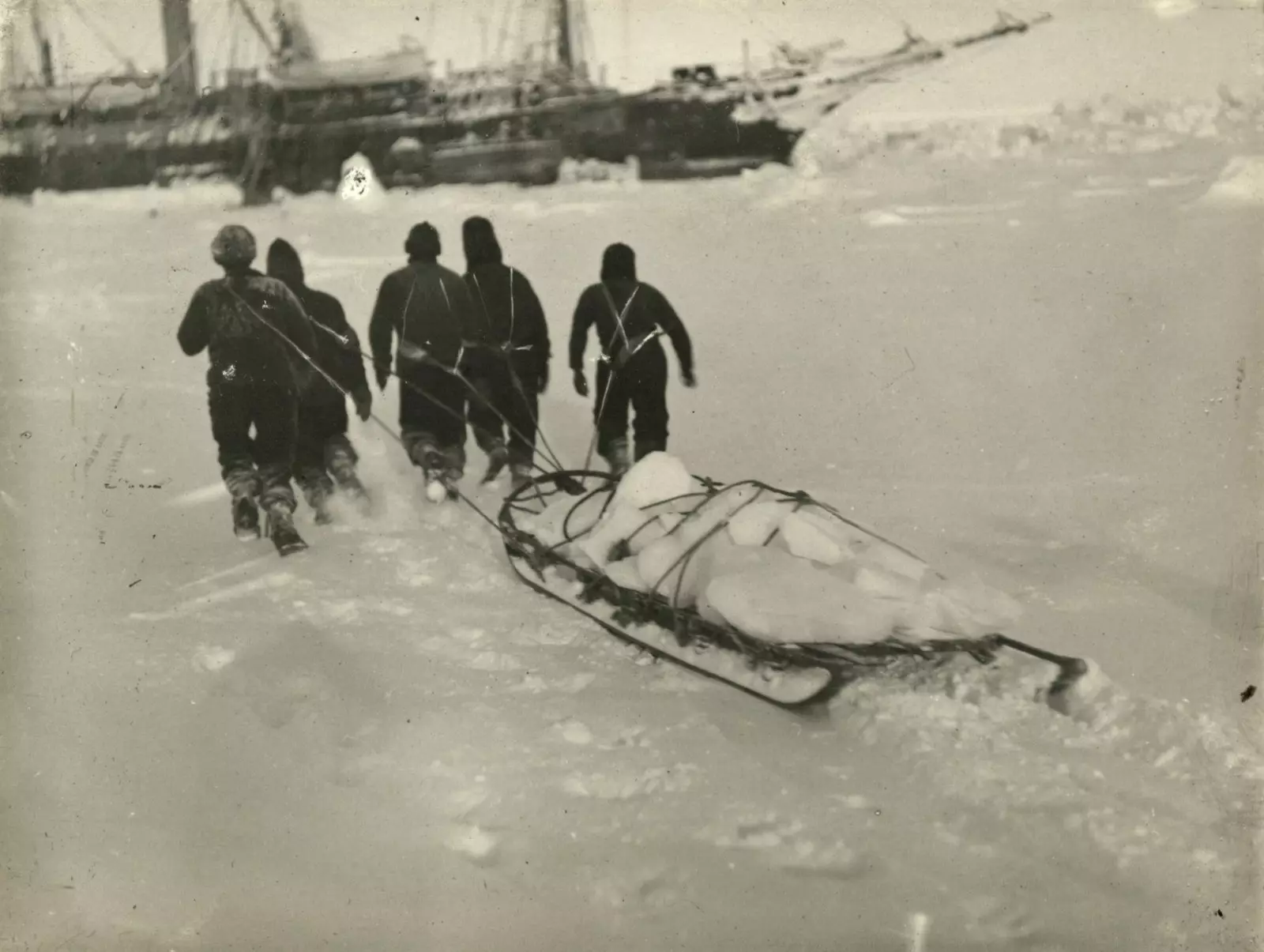
They would cross Antarctica on foot until they reached the Ross Sea
Wrapped in this romantic and intense adventurous spirit, with a promise of glory and fame rather diffuse and with the crew enlisted -plus a stowaway who slipped in-, the Imperial Transantarctic Expedition, I was ready for travel south.
For this third great assault, Shackleton counted among his men his “right hand”, Frank Wild, as Second Commander , with Frank Worsley as captain and with the photographer, Frank Hurley , who documented the expedition.
In addition, the purpose of the trip also had overtones of a scientific nature, since on the ship they traveled four scientists: Robert S. Clark, biologist; Leonard Husseo, meteorologist; James Wordie, geologist and Reginald James, physicist.
In August 1914, the Endurance set sail. Despite the fact that summer was beginning in the southern hemisphere, temperatures were much cooler than usual, so in the south georgia islands Some whalers in the area warned the crew about the difficulty of traversing the South Sandwich Islands , advising them not to undertake the trip until after a few months.
No one like them knew those waters and their endless dangers, however, turning a deaf ear to their advice, Shackleton gave the order to sail on December 5, 1914. A few days later, disaster struck.
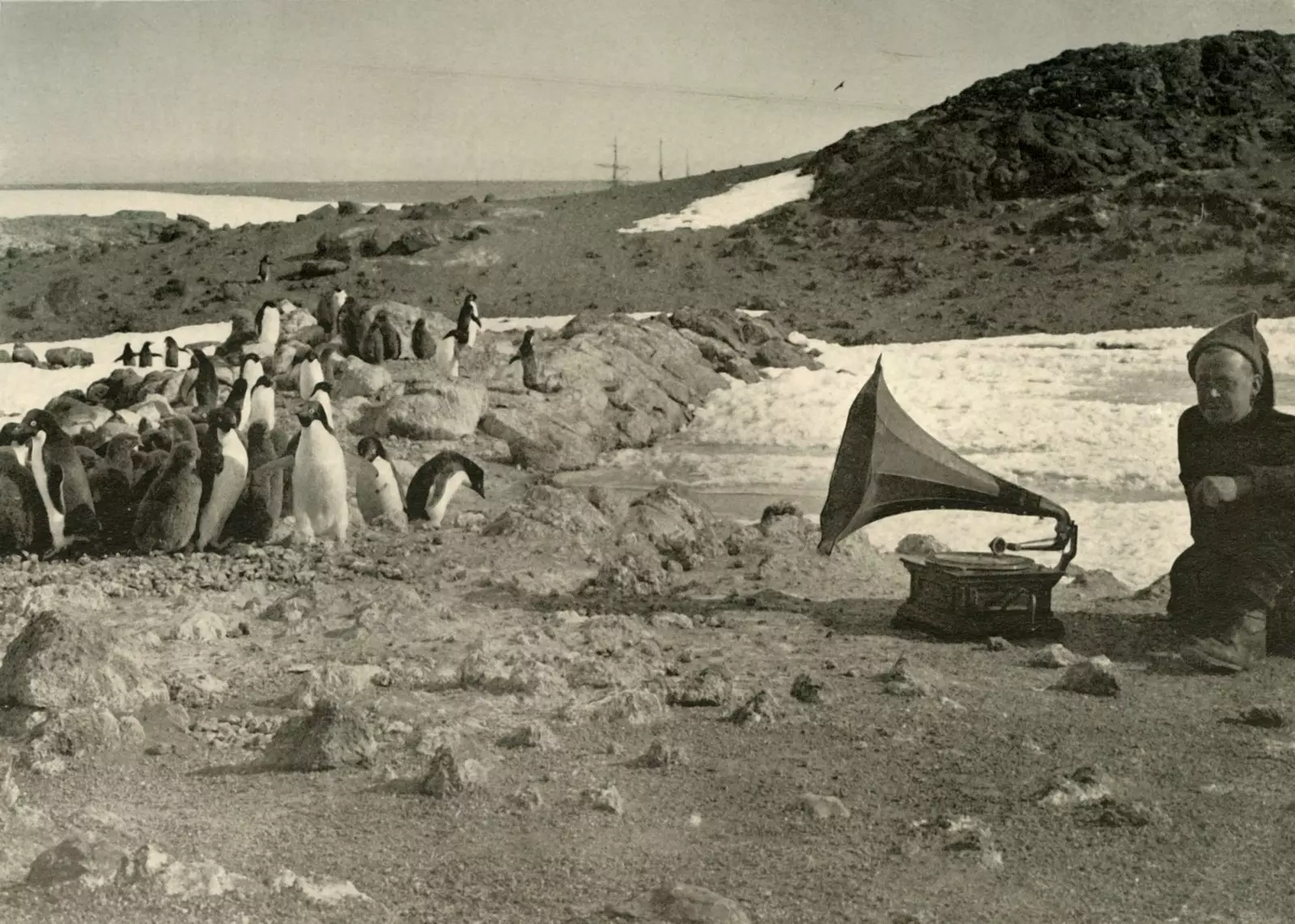
Penguins listening to the gramophone during the summer of 1908
After navigating with difficulty through the weddell sea , the advance stopped completely and the ice sea, stretching as far as the eye could see, closed around the Endurance, turning into an icy prison.
They were only a few 160 kilometers to reach the mainland , an insurmountable distance. They had run aground only a day's sail from their destination. Years later, the expedition's meteorologist, Leonard Hussey, recalled: "On February 14, 1915, the temperature suddenly dropped, from 8 to 28 degrees below zero, the whole sea froze and we froze with it."
Tantalizingly close to their destination, the crew and ship were stuck for much longer than they could imagine. At first, they made great efforts to free the ship, even reaching to crush the ice without rest, for 48 hours, trying to reach the open sea, but were forced to abandon this herculean bet for freedom.
FrankHurley, who filmed that exhausting fight, wrote in his diary: “all the men worked until midnight, when a measurement of the remaining two-thirds was made, regretting it, it was decided to abandon the task because the rest of the ice is impracticable”. From there, The only thing left to do was wait for the next southern summer to arrive. Meanwhile, there was nowhere to go.
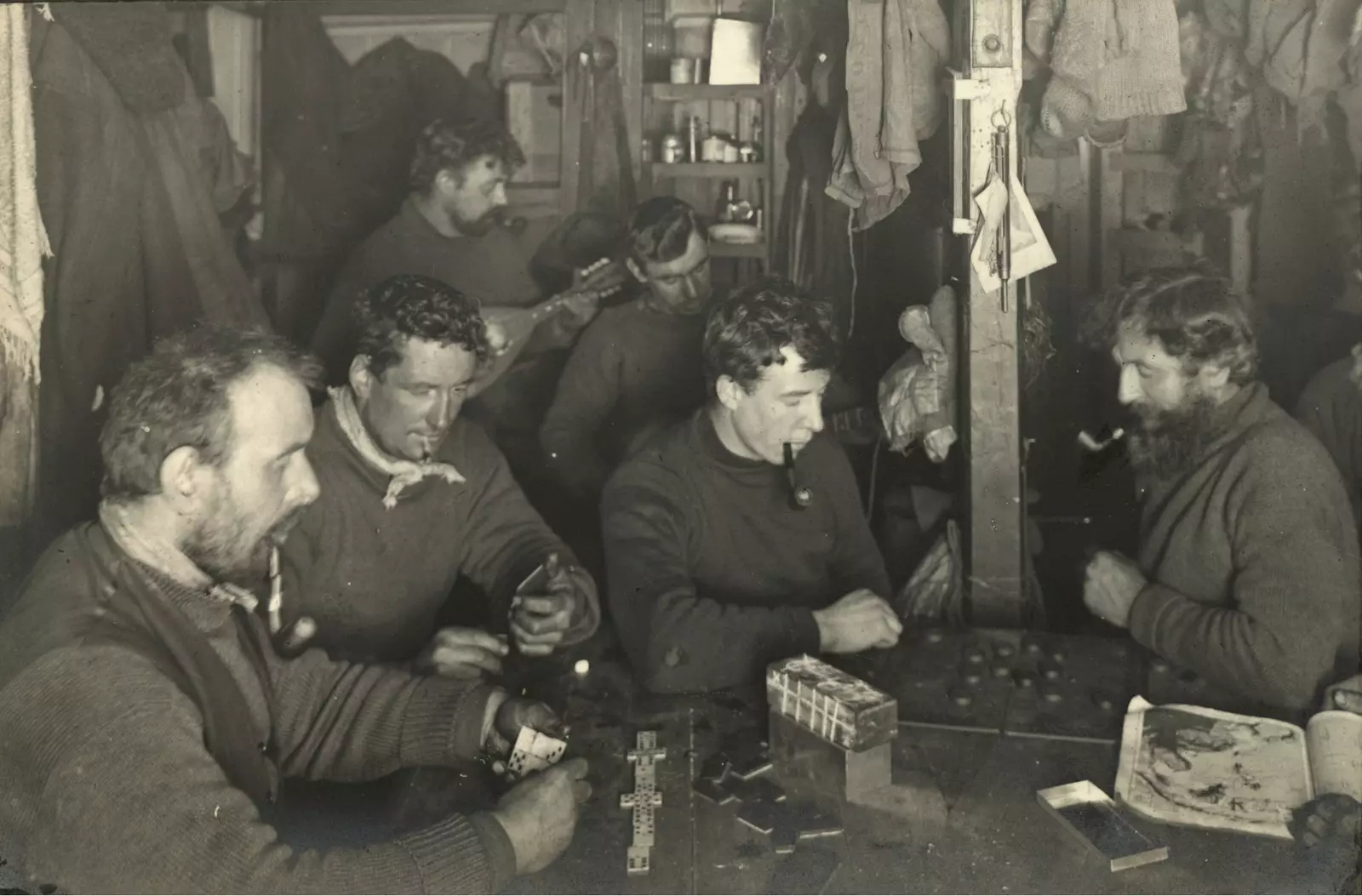
The expedition group inside the Endurance
Oblivious to a world in which the Great War was being waged and the dead began to be counted by millions, that stranded ship became a refuge and the crew dedicated themselves to its maintenance, it was like a drifting floating hotel, which they called “Ritz”.
Shackleton's men kept busy with survival tasks, shoveling snow, collaborating with Robert Clark, the group's biologist, in their studies of the seabed or hunting seals and penguins with which to feed, something that, in the long run, saved their lives and saved them from suffering from scurvy.
The months went by and with them came the desolation of the polar nights with its endless sunless days engulfed in the most absolute and icy darkness.
"The Boss" - as the crew called Shackleton -, aware of the history of polar exploration, where some disagreements led to tragic results and that the Antarctic winter can drive anyone crazy, he knew they would only have any chance of getting out of this if he could keep his team together.
His leadership was crucial for all, for this, he imposed a system of essential tasks distributed without distinction of ranks, in which he himself participated.
And, despite the suffering, there was also time for fun; spent time reading, theatrical performances, gramophone concerts, and even soccer games were played on the ice.
CAMP PATIENCE
Crushed by the embrace of the ice pack, the Endurance I was doomed. Almost a year after her shipwreck, on October 27, 1915, the crew was forced to abandon it , suddenly finding themselves forced to survive in the open, without the security that the ship had given them for months.
It was then that they abandoned any idea of fulfilling the original mission and surviving in the frozen desert became the real goal. This polar world in which they now lived was not dry land, but a thin crust of ice that continued to sail and cracking underfoot and over the deep Southern Ocean.
Worsley wrote "My ship was being destroyed and I couldn't do anything to save it." Finally, before the dismayed look of the crew, the sea ended up swallowing that mess that had brought them there.
Almost all the equipment they had with them was lost and the possibility of dying on that place alien to the rest of the planet , became a reality, because everyone knew that, in a world at war, no one would remember them anymore. But Shackleton, always accompanied by an optimistic spirit, encouraged the group: "Boys, we're going home."
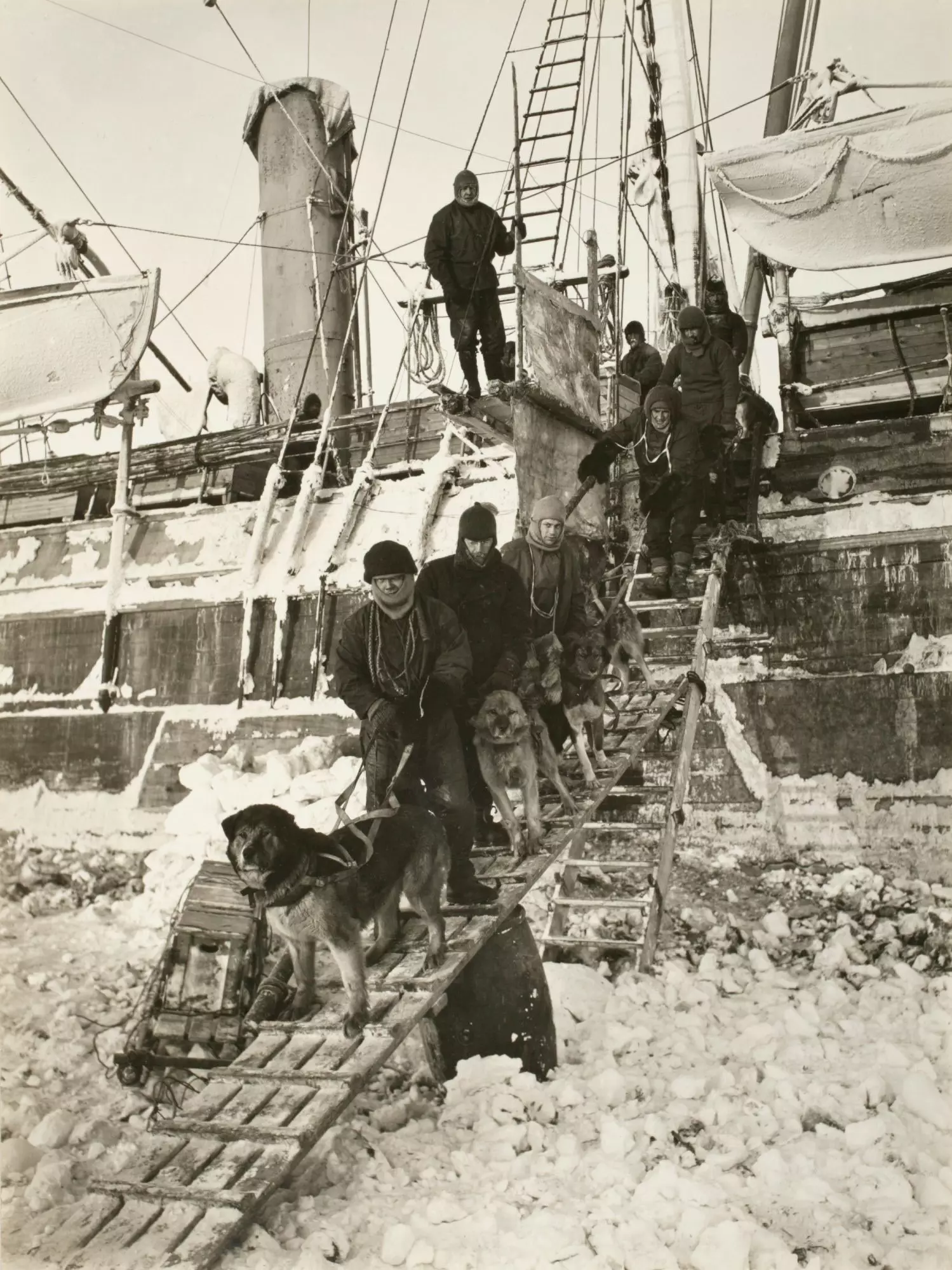
Crew leaving the Endurance
Many were the attempts, devised by Worsley and by Shackleton , of approaching the ocean, including several attempts to ferry the heavy boats through the undulating ice to the sea, but the currents were stronger and made them retrace their steps. Finally, they decided to wait for the ice to carry them to open water and established a new home: Camp Patience.
Living conditions on the ice are miserable and the expedition members had to endure all kinds of unimaginable hardship, including, they were forced to sacrifice Mrs. Chippy -the cat they kept as a pet- and to the 69 sled dogs, who had become true brothers and companions in misfortune, to be able to feed.
“It was my turn to do it and it was the worst job of my life. I've met plenty of men I'd rather shoot than the worst of those dogs," lamented Frank Wild. But Shackleton, who remained optimistic and hopeful , put the life of his men before anything else: if he couldn't cross the continent, he would at least take them back home. Safe and sound.
As the temperature increased, the icebergs on which they lived began to become thinner and thus more unstable. It was then that, in April 1916, Shackleton gave the order to get on the boats and navigate to one of the nearest islands.
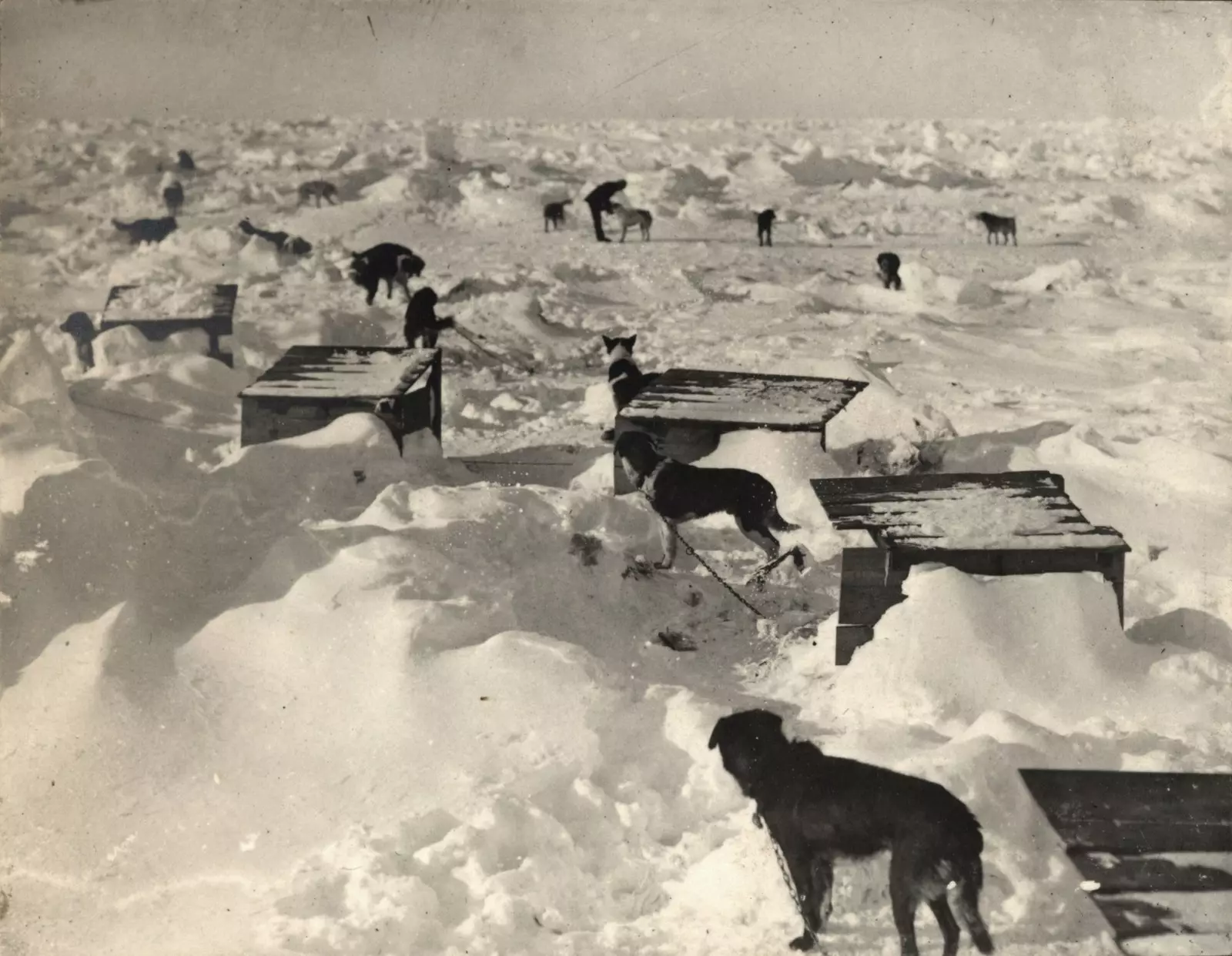
Dogs staying on the iceberg, February 23, 1915
After facing all the dangers of the ice, he had to face those of the sea, beginning, thus, a very hard and eventful journey of seven days to Elephant Island, more than 550 kilometers from the place in which the Endurance had sunk.
Finally, after 497 days, since they last set foot on solid ground , they could again feel what it was like to sleep and eat on its unsinkable solidity. Shackleton had achieved the first of his goals , that all his men return alive to step on a safe ground and that it was not made of ice.
"YOU DON'T RECOGNIZE ME?"
Despite finally being on land, they were still isolated and needed to get out of there. No one would come looking for them until elephant island , so they had to go looking for help themselves and the most plausible option was to try to reach, again, the South Georgia Islands, almost 1,300 kilometers away.
The crew was in terrible physical, health and mental state, and Shackleton decided to take only one of the boats, in which they will travel six men, including himself and Worsley. Ahead of them was the most dangerous ocean in the world and the hope of the 22 men who stayed on the beach with Wild in command.
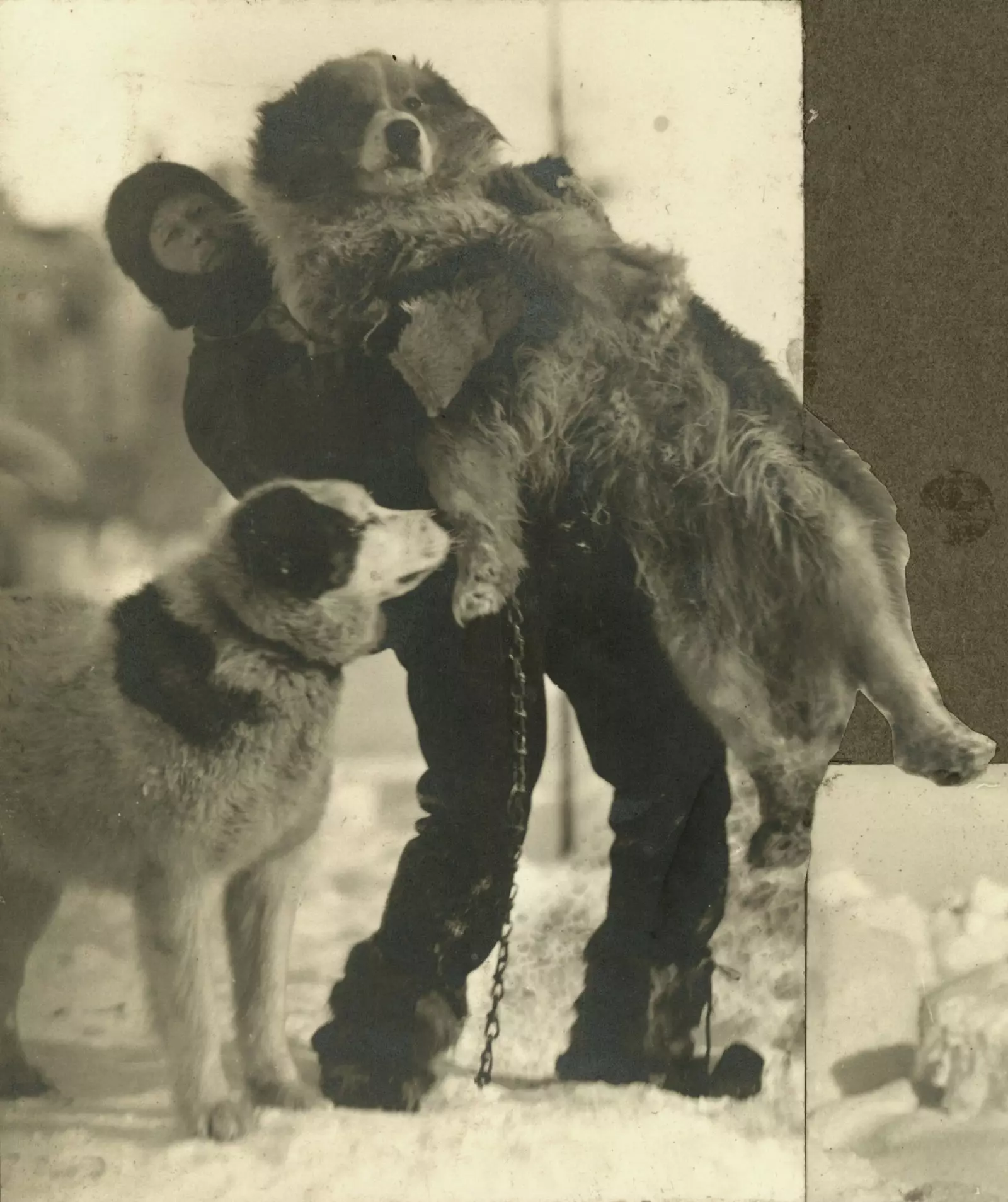
Meteorologist Leonard Hussey (1891 - 1964) with Samson
With a temperature that touched 20 degrees below zero and constantly wet, they passed 16 days paddling between huge icebergs and dangerous tides. Shackleton took care of the men, while his talent as a navigator of Worsley took them to the west coast of South Georgia.
Nevertheless, that area was uninhabited and the whaling facilities were on the north coast of the island, so, unable to face the sea again, Shackleton, with little mountaineering experience, decided that he, Worsley and another of his men they would cross the labyrinth of glaciers and cliffs that shaped the interior of the island.
The May 20, 1916 , the whistle from a whaling facility was the first sound from the outside world they heard. At three o'clock in the afternoon of the same day, they set foot in the port of Stromness. “Do you not recognize me? I am Shackleton." he asked the stationmaster when, at last, he met him. Had passed twenty-one months since the Endurance had been lost in Antarctica.
It was the explorer himself who was in charge of organizing the rescue party for the men who still remained on Elephant Island. After several failed attempts, finally With the help of the Chilean government, the fourth time was the charm.
The August 20, 1917 , one of the Elephant Island castaways told the rest that he saw a ship in the distance. It was Shackleton. Against all odds they were all alive and they were able to return to a Great Britain that little or nothing resembled the homeland they had left two years before. Something similar to what happened with themselves.
“As head of a scientific expedition I would choose Scott, for a fast and efficient polar raid , to Amundsen, but in the midst of adversity, when you see no way out, get down on your knees and pray they send Shackleton to you." after this experience, no one would doubt these words of the geologist Raymond Priestley.
Since, even though the expedition itself did not take place , this feat of survival in the worst possible conditions went, in its own right, into the annals of history. After all, nobody could say that Shackleton failed.
